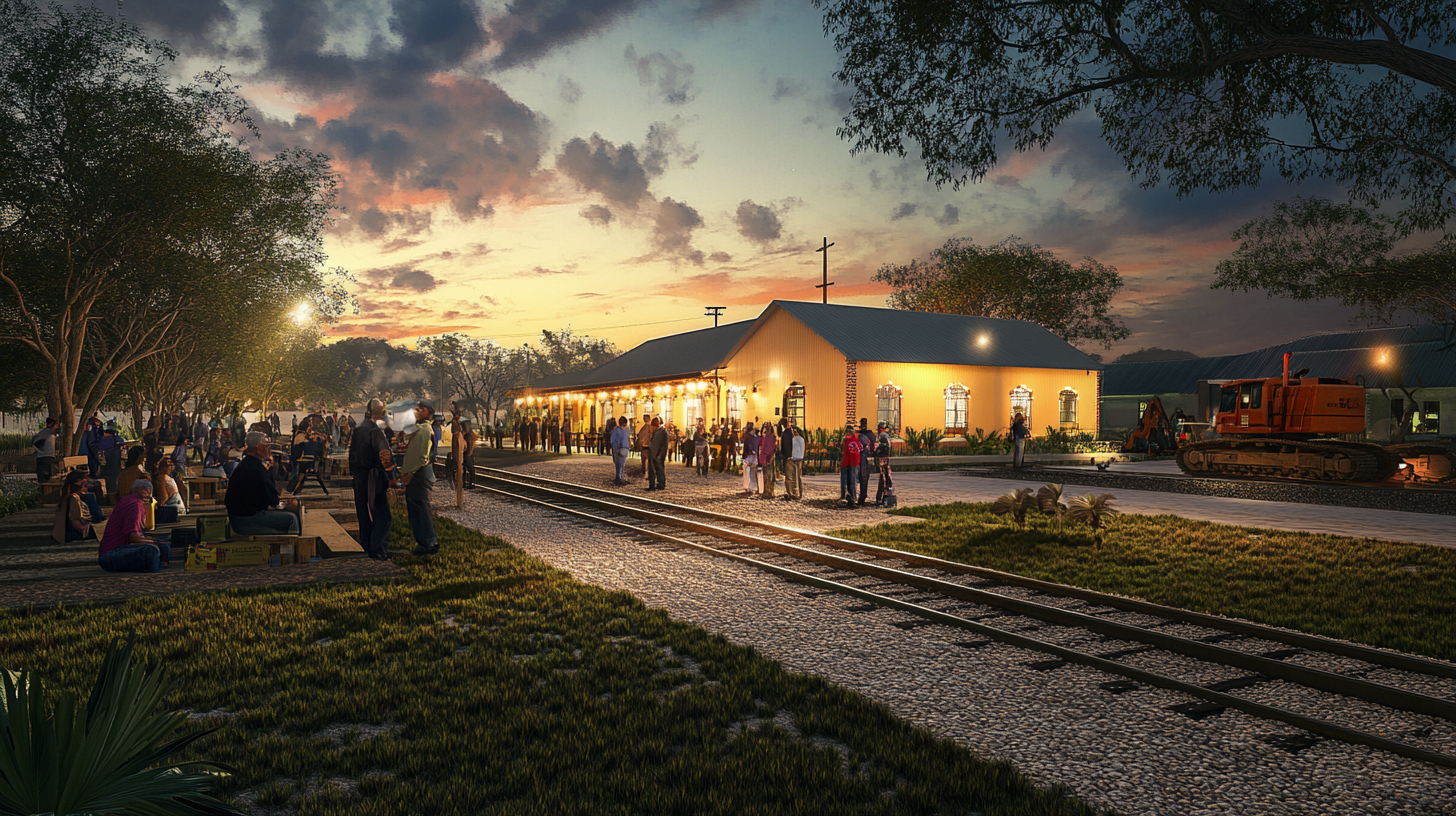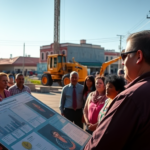Sepulveda Updates on Harlingen Rail Improvements Project: Enhancing Local Connectivity
Pete Sepulveda, Executive Director of the Cameron County Regional Mobility Authority (CCRMA), provided significant insights into the progress of the Harlingen Rail Improvements Project during a recent meeting with the South Texas Manufacturers Association in Brownsville. This update is pivotal for the Rio Grande Valley, considering the major implications it holds for local infrastructure, safety, and economic growth.
Project Overview and Goals
The Harlingen Rail Improvements Project aims to relocate and realign 1.7 miles of track along Commerce Street in Harlingen. This ambitious plan seeks to create a new crossing and eliminate seven existing grade crossings, effectively enhancing connectivity between the Union Pacific Railroad (UPRR) Harlingen and Brownsville subdivisions. By straightening two curves in the track, the project intends to increase the rail speed from 10 MPH to 30 MPH, significantly reducing congestion and ensuring the smooth flow of both rail and road traffic.
“It’s a good quality of life project for the City of Harlingen,” Sepulveda remarked, emphasizing the project’s benefits such as improved safety and reduced operational disruptions that currently affect Valley residents.
Historical Context and Previous Developments
The roots of the Harlingen Rail Improvements Project trace back two decades when Cameron County and Union Pacific forged an agreement to enhance rail operations and safety across the region. A notable milestone in this journey was the $20 million relocation of the switch yard from downtown Harlingen to Olmito, a strategic move that freed downtown Harlingen from frequent train-induced traffic jams.
“Relocating the switch yard was pivotal,” Sepulveda noted. “It opened up downtown Harlingen, resolving issues where vital streets were blocked multiple times daily, alleviating disruptions for Valley residents.”
Federal Support and Financial Challenges
The Commerce Street project has garnered financial backing from the Federal Railway Administration, highlighting its strategic importance. However, cost escalations have led to a current debt shortfall of $7 million. Sepulveda acknowledges that CCRMA is working diligently with Union Pacific to value engineer the project and is actively seeking additional federal funding to bridge the gap, ensuring that the project’s financial health aligns with its broader goals.
Impact on the Rio Grande Valley Community
For the Rio Grande Valley, particularly Harlingen, this project is more than an infrastructural upgrade; it’s an enhancement to everyday life. By reducing rail congestion and improving traffic flow, it is poised to boost the local economy, increase safety for road and rail users, and potentially attract new businesses and residents to the area. Improved rail efficiency could also potentially lower freight costs, benefiting local manufacturers and distributors in South Texas.
Jose Martinez, a local business owner, shared his perspective: “Enhanced rail infrastructure can lead to more reliable logistics and supply chains, which is invaluable for businesses. This project could be a catalyst for economic dynamism in South Texas.”
Connections to Ongoing Developments
This undertaking is part of broader transportation enhancements across the region, underscored by ongoing and recently completed projects. Claudia Perez Rivas, a reporter noted for covering regional transportation issues, emphasized these developments in her recent reports, acknowledging the steady improvements being made to South Texas’ infrastructure.
Future Implications for the Region
Looking ahead, the successful completion of the Harlingen Rail Improvements Project could establish a model for similar initiatives along the U.S.-Mexico border, where increasing trade and logistical complexities demand robust infrastructure solutions. By aligning strategic planning with community needs, Cameron County could position itself as a leader in regional transportation innovation.
Skeptics, however, urge a balanced approach. Concerns remain about potential displacement effects during construction and the need for smart integration with other transit solutions. Engaging the community through ongoing dialogue and transparent planning will be key to addressing these issues.
Engagement and Resource Information
Cameron County residents and stakeholders are encouraged to stay informed and participate in ongoing discussions about this project. Those interested in more details or in contributing feedback can contact the Cameron County Regional Mobility Authority through their official website or attend upcoming public forums.
In summary, the Harlingen Rail Improvements Project rests at a critical juncture, promising to redefine transport dynamics in the Rio Grande Valley. Through steadfast cooperation and strategic infrastructure investment, it offers a beacon of hope for a more connected and prosperous South Texas.







